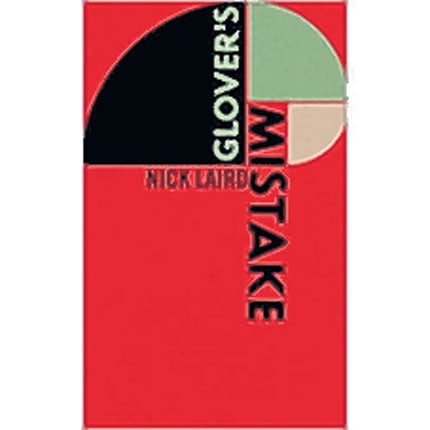Glover's Mistake, by Nick Laird
In the room, the men come and go

Your support helps us to tell the story
From reproductive rights to climate change to Big Tech, The Independent is on the ground when the story is developing. Whether it's investigating the financials of Elon Musk's pro-Trump PAC or producing our latest documentary, 'The A Word', which shines a light on the American women fighting for reproductive rights, we know how important it is to parse out the facts from the messaging.
At such a critical moment in US history, we need reporters on the ground. Your donation allows us to keep sending journalists to speak to both sides of the story.
The Independent is trusted by Americans across the entire political spectrum. And unlike many other quality news outlets, we choose not to lock Americans out of our reporting and analysis with paywalls. We believe quality journalism should be available to everyone, paid for by those who can afford it.
Your support makes all the difference.There are three main protagonists in Nick Laird's second novel: Ruth, Glover, and the frustrated central character, David. It is through David's eyes that we see a romance developing between Ruth and Glover.
Laird compares Ruth to "one of Prufrock's females", and develops this allusion to pretension and neurosis. Ruth is a self-absorbed, successful artist whose egocentricity has been nurtured by many admirers. Unfortunately, we do not learn much more about her. It is hard to tell whether Laird is as seduced by her surface appeal as Glover and David, or content to portray a shallow, selfish woman.
As well as the ill-fated romance between an unsophisticated man and an older woman with a sex addiction, Laird attempts a satire on the contemporary art scene. Satire is a hard thing to pull off without some real rage and there is no such energy in Laird's writing. But he can be illuminating when he is contemplative: "Art was addictive, [David] realized, because analogy was a technique of integration, and thus gave endless, untrue hope for reconciling everything."
David is the saving grace of this novel. Looking for Michelangelo's disegno, acting as a kind of emblem for purity of heart and artistic purpose, he stumbles heroically through the mess he has made of his life. He is an immensely touching creature; Michelangelo's David coming to life.
Sometimes Laird attempts too much. In such a slim novel, he has too many peripheral characters and runs out of space to describe them. The subsidiary characters who do have zip and poignancy are the lower middle-class families Glover and David have left behind. Laird's writing sparkles when he stops satirising and gets to the heart of the matter; his prose touches on the truth of his characters in moments when simplicity suffices. Ruth makes a glass heart as a sculpture. At first, the symbolism creaks. By the end, when this glass heart has reached David's hands, it acquires some meaning.
Join our commenting forum
Join thought-provoking conversations, follow other Independent readers and see their replies
Comments